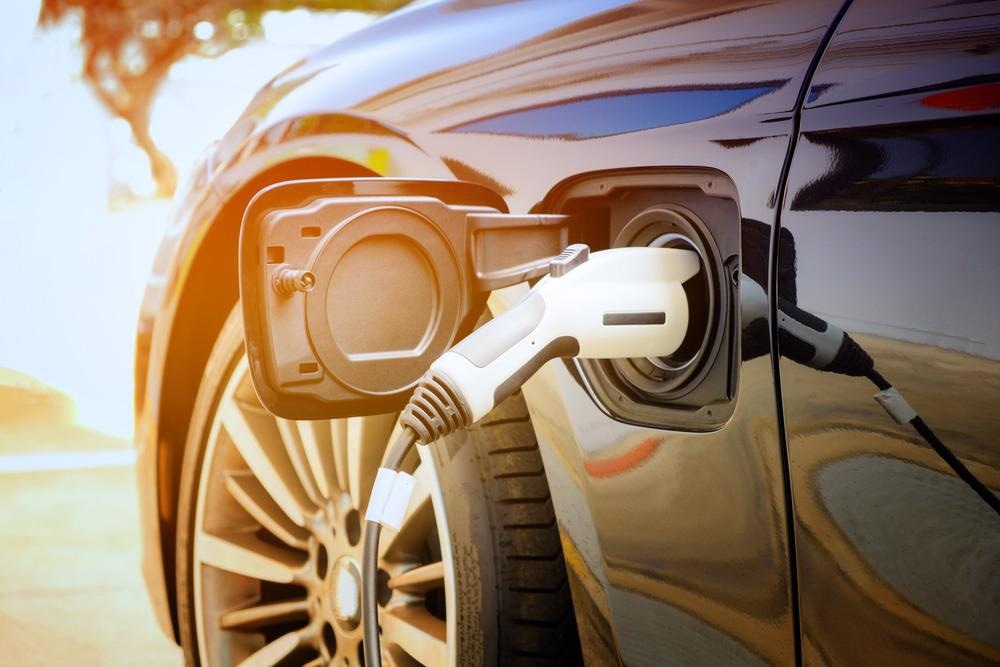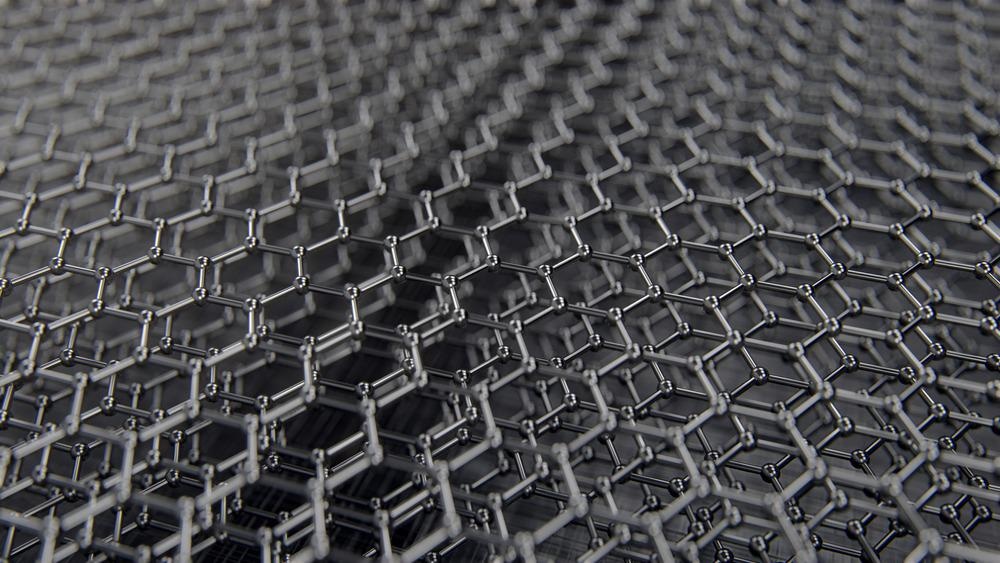This article discusses the potential of graphene batteries as energy storage systems in electric vehicles (EVs). Graphene has several advantages over other commercial standard battery materials, including being strong, lightweight, and more abundant.

Image Credit: tong patong/Shutterstock.com
Batteries Currently Used in EVs
Energy storage systems such as batteries play a critical role in electric vehicles (EVs), plug-in hybrid electric vehicles (PHEVs), and hybrid electric vehicles (HEVs). The major battery types currently used in EVs, PHEVs, and HEVs as energy storage systems include lithium-ion batteries, nickel-metal hydride batteries, lead-acid batteries, and ultracapacitors.
Among these, lithium-ion batteries are used most extensively in EVs owing to their high energy efficiency, high power-to-weight ratio, good performance at high temperatures, and better energy ratio per weight compared to other energy storage systems, which is an extremely significant factor for EV batteries. A lighter car battery weight implies greater mileage with a single charge.
However, the high temperature that develops during battery operation, high cost of production, and issues related to the recycling of dead batteries are the major disadvantages of Li-Ion batteries. Thus, the focus has shifted to graphene batteries as energy storage systems for EVs in recent years.
What is Graphene?
Graphene is referred to as a two-dimensional (2D) structure of graphite, where one flat layer of carbon atoms is organized into a supportive honeycomb lattice. Although graphene can be prepared in several ways, plasma-enhanced chemical vapor deposition (PE-CVD) is the most suitable technique to produce graphene.
The major benefits of the PE-CVD technique include lower operating substrate temperatures and transfer-free and catalyst-free growth. In PE-CVD, a special mixture of gases, including carbon, is heated into a plasma that creates a layer of graphene on a copper or nickel plate. Subsequently, graphene is extracted from the plate.
Graphene Battery Technologies and Types
A number of battery technologies and types can be developed based on graphene. The most promising among them include lithium-metal solid-state batteries, solid-state batteries, supercapacitors, graphene-enhanced lead-acid batteries, graphene sodium-ion batteries, graphene aluminum-ion batteries, and graphene lithium-ion batteries.
Advantages of Graphene Batteries
Graphene-based materials have high porosity and greater surface area and are extremely strong and lightweight. Additionally, these materials possess high-charging capability and flexibility and are good conductors of thermal and electrical energy, which make them a suitable material for storing energy.
The high electrical conductivity of graphene increases the electrode density and accelerates the chemical reaction within the battery, which enables greater power transfer and faster charge speeds with less heat. Graphene also undergoes less degradation compared to lithium while delivering an improved performance, which prolongs the lifespan of EV batteries substantially. Moreover, graphene batteries are also cost-efficient and more sustainable than many other EV batteries.
Implementation of Graphene Batteries in EVs
Among the different graphene-based battery technologies and types, graphene lithium-ion batteries are expected to be implemented in the next 1-3 years, solid-state batteries within the next 4-8 years, and graphene supercapacitors within 10 years. Graphene sodium-ion and graphene aluminum-ion batteries can potentially replace lithium-ion batteries as they are much cheaper and easier to recycle, and sodium and aluminum are more abundant in nature compared to lithium.

Image Credit: Dorxela/Shuttertock.com
Graphene aluminum-ion batteries can become the primary EV battery in the future as graphene aluminum cells can charge 60 times faster compared to lithium-ion cells, and hold significantly more energy than pure aluminum cells. For instance, graphene aluminum-ion cells can recharge an AA battery within a minute and a coin-cell battery in 10 seconds.
Limitations of Graphene Batteries
There are certain limitations associated with graphene-based batteries despite their benefits as energy storage systems in EVs. The most prominent limitation is the lack of mass-production techniques for manufacturing high-quality graphene batteries. Currently, the production cost of 1 kg of graphene ranges between tens and thousands of dollars, which is substantially higher compared to the production cost of activated carbon at $15 per kilogram.
Additionally, the thickness of graphene-based materials is often limited to micrometers, which substantially limits the overall capacity of the battery. Moreover, graphene batteries typically demonstrate poor capacity retention, extremely high first cycle loss at 50%-60%, and low cycling efficiencies at 95%-98% at high current densities.
Furthermore, graphene cannot be switched off as it lacks a bandgap, which implies that there is no place in the material where electrons do not exist. Thus, an artificial bandgap must be engineered in graphene to overcome the challenge.
Potential of Graphene Batteries in EVs
Although the use of graphene batteries in EVs is currently possible, they are not yet available commercially as more research is required to develop mass production techniques and to further determine the practical abilities of the material. Several companies have shown interest in graphene batteries to power EVs.
For instance, Nanotech Energy has recently received funding from Fubon Financial Holding to develop graphene-enhanced batteries for EVs, while Spain-based Graphenano has collaborated with a China-based player to develop a graphene polymer-based battery that can provide EVs a maximum range of 500 kilometers and a recharge time of fewer than 5 min. In the future, graphene can become a crucial material for developing large-scale energy storage, and graphene batteries remain the most promising EV battery technology.
References and Further Reading
Yu, A. Graphene Battery as Energy Storage. Stanford University 2017. http://large.stanford.edu/courses/2017/ph240/yu1/
Pistilli, M. (2022, January 10). Is Tesla Making a Graphene Battery? INN. https://investingnews.com/daily/tech-investing/nanoscience-investing/graphene-investing/graphene-battery-tesla/
Maxwell, A. (2022, February 8). Graphene EV Batteries: How Far Away Are We? – Top Charger. Top Charger – EV Charger Reviews and Guides. https://topcharger.co.uk/graphene-ev-batteries-how-far-away-are-we/#13-what-is-the-most-promising-graphene-battery-technology-
Electric Car Batteries and Characteristics. (2021, May 29). Omazaki Group. https://www.omazaki.co.id/en/electric-car-batteries-and-their-characteristics/
Alternative Fuels Data Center: Batteries for Hybrid and Plug-In Electric Vehicles. (n.d.). AFDC. https://afdc.energy.gov/vehicles/electric_batteries.html
C, Iclodean. et al. Comparison of Different Battery Types for Electric Vehicles. IOP Conference Series: Materials Science and Engineering 2017. https://iopscience.iop.org/article/10.1088/1757-899X/252/1/012058/pdf#:~:text
Disclaimer: The views expressed here are those of the author expressed in their private capacity and do not necessarily represent the views of AZoM.com Limited T/A AZoNetwork the owner and operator of this website. This disclaimer forms part of the Terms and conditions of use of this website.